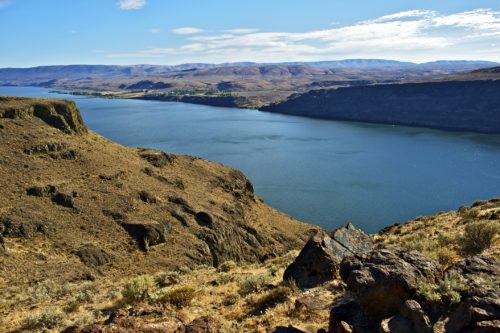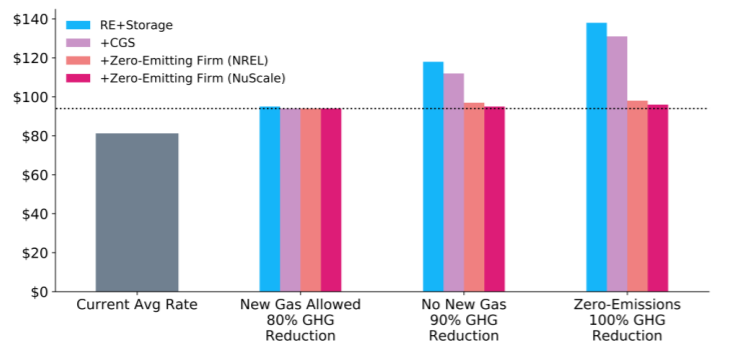
Following 2019 Washington state legislation calling for emissions-free electricity by 2045, E3 recently investigated the role of zero-emitting firm resources in achieving regional carbon goals and maintaining reliability in a deeply decarbonized Pacific Northwest.
E3 considered permutations of resources including renewables, storage, and natural gas, as well as zero-emitting firm resources – the Columbia Generating Station nuclear power plant, new small modular reactors, biomethane, and carbon capture and sequestration (CCS) – in calculating the cost of meeting regional carbon reduction goals ranging from 80 percent to 100 percent below 1990 levels by 2045.
As in past studies, E3 found that achieving deep emissions reductions from the electric sector is achievable at manageable cost, provided that firm capacity is available to avoid the infrequent but large electricity shortages that can occur on highly renewable grids.
E3’s study finds that the Columbia Generating Station – the Northwest’s only nuclear generator and Washington’s third-largest generating resource – is relicensed in all scenarios in which it is available.
Small modular reactors (SMRs) offer potential cost, performance, and safety advantages over conventional nuclear generation and could reach commercialization by the mid-2020s.
The role of SMRs in the Northwest’s future electricity system depends on three factors: their cost; the stringency of regional emissions limits; and whether gas generators are allowed to provide firm capacity.
E3 finds that SMRs have their largest build-out in cases where gas generators, powered by either natural gas or biomethane, are prohibited. In these cases, the first SMRs are built by 2030, with at least 6.3 GW of SMRs built by 2045.
E3’s SMR cost estimates came from NREL’s Annual Technology Baseline (ATB) nuclear resource and “nth of a kind” estimates from NuScale, an SMR vendor.
The study uses E3’s RESOLVE model to optimize the resource portfolio and minimize the total net present value (NPV) of electric system costs over the study time horizon. The figure below shows 2045 electricity rates under different resource and emissions scenarios, according to E3’s analysis.

The study builds on several notable E3 studies, including Pacific Northwest Low Carbon Scenario Analysis and last year’s Resource Adequacy in the Pacific Northwest.
The study was commissioned by Energy Northwest, a public power agency comprising 27 public utility districts and municipalities across the State of Washington. Energy Northwest’s portfolio, which includes the Columbia Generating Station, consists solely of carbon-free resources: wind, solar, hydropower, and nuclear.
Report
Pacific Northwest Zero-Emitting Resources Study
Pacific Northwest Zero-Emitting Resources Study: Executive Summary
Media
POWER Magazine, “Energy Northwest Study Makes a Case for SMRs in Future Power Mix”
YakTriNews, “Energy Northwest considering new small modular reactor to help meet clean energy goals in Washington”


